How to Draw a Dress
Delving into the world of fashion illustration, I’m eager to show you how to draw a dress that’s brimming with style and simplicity. This lesson is a creative process, breaking down the complex folds and flows of a dress into easy steps. We’ll explore the essentials of drawing a delightful A-line dress, focusing on its elegant silhouette.
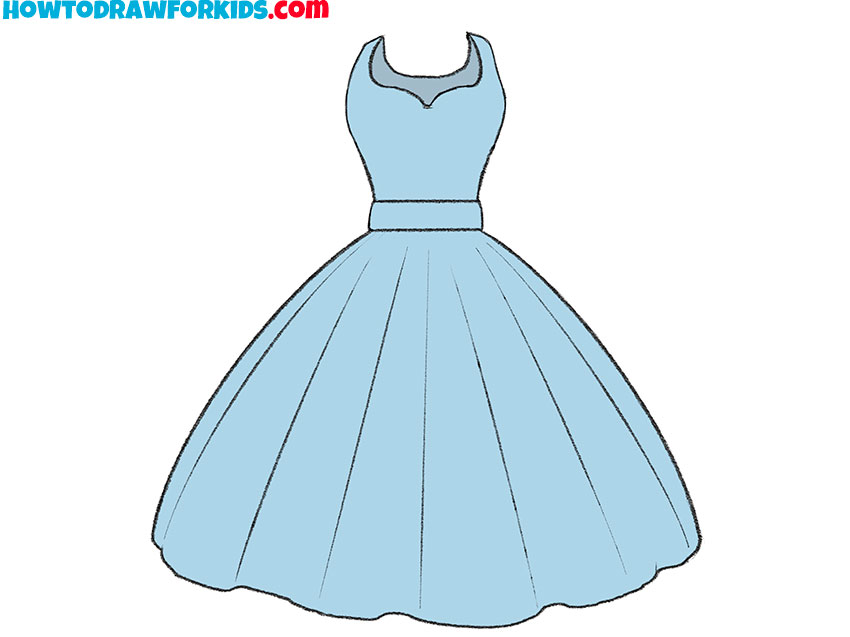
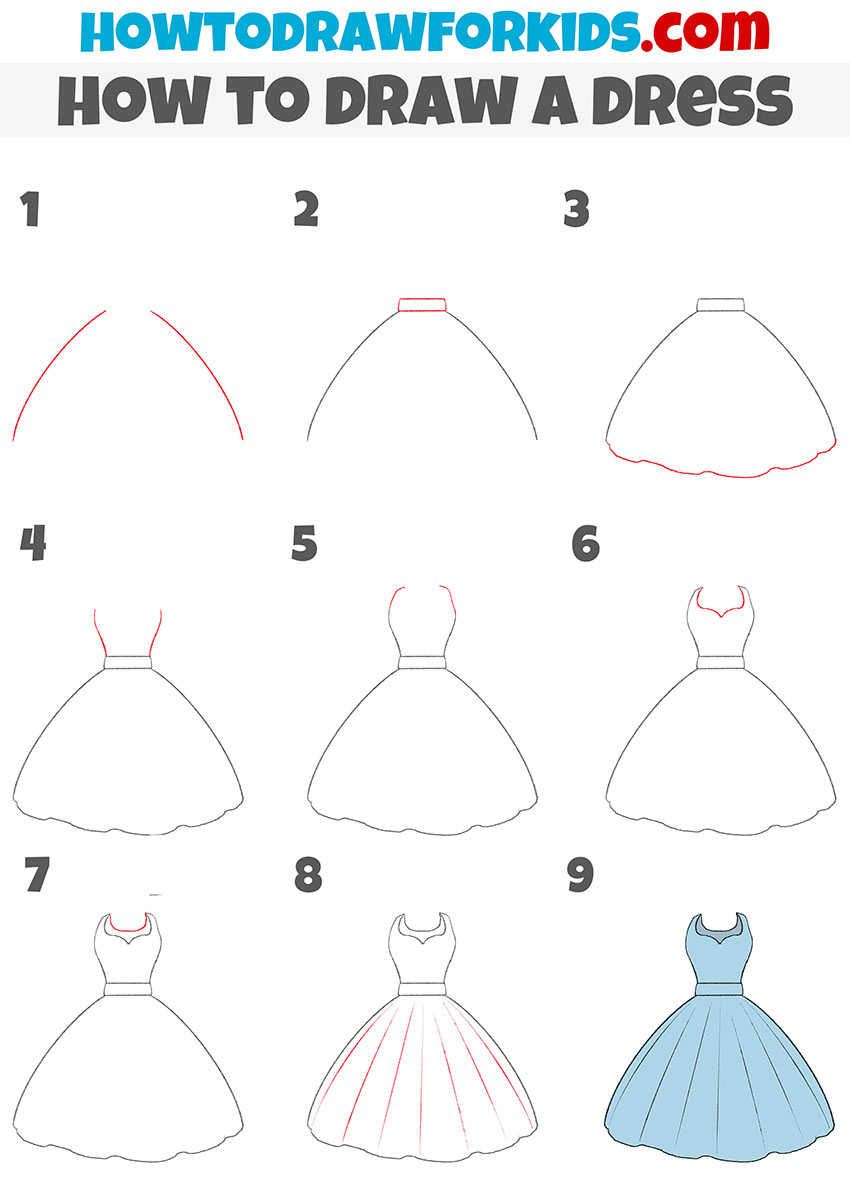
How to Draw a Dress: Basic Information
In the art of illustration, few things are as delightful as capturing the swirl of a dress. With this tutorial, I’ll guide you on how to draw a dress, from the initial outline to the final touches of its flowy skirt. My technique ensures that each step is accessible, allowing you to depict elegance with ease.
The dress we’ll illustrate is designed with a fitted bodice and a flared skirt, a staple of timeless fashion. I focus on the importance of proportion and symmetry to ensure the dress looks balanced and wearable. From the waistline to the fall of the fabric, every line we draw will contribute to a sense of harmony and grace.
When you finish this lesson, you’ll have the skills to draw a dress that not only looks good on paper but feels like it could twirl right off the page. This tutorial is designed to empower you to add a touch of fashion to your art, helping you create pieces that are as fashionable as they are artistic.
Dress Drawing Tutorial
Materials
- Pencil
- Paper
- Eraser
- Coloring supplies
Time needed: 20 minutes
How to Draw a Dress
- Draw the outline of the lower part of the dress.
To complete this step, draw two symmetrical curved lines opposite each other.

- Add an element in the middle of the dress.
Connect the two upper ends of the lines, depicting a figure similar to a trapezoid.
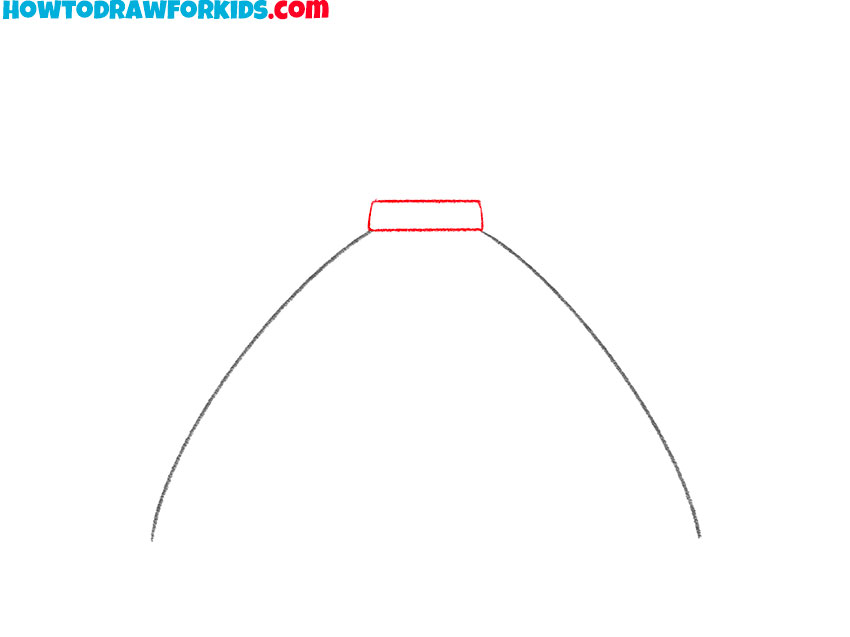
- Depict the outline of the bottom edge of the dress.
Draw a curved wavy line to connect the lower ends of the curved lines.
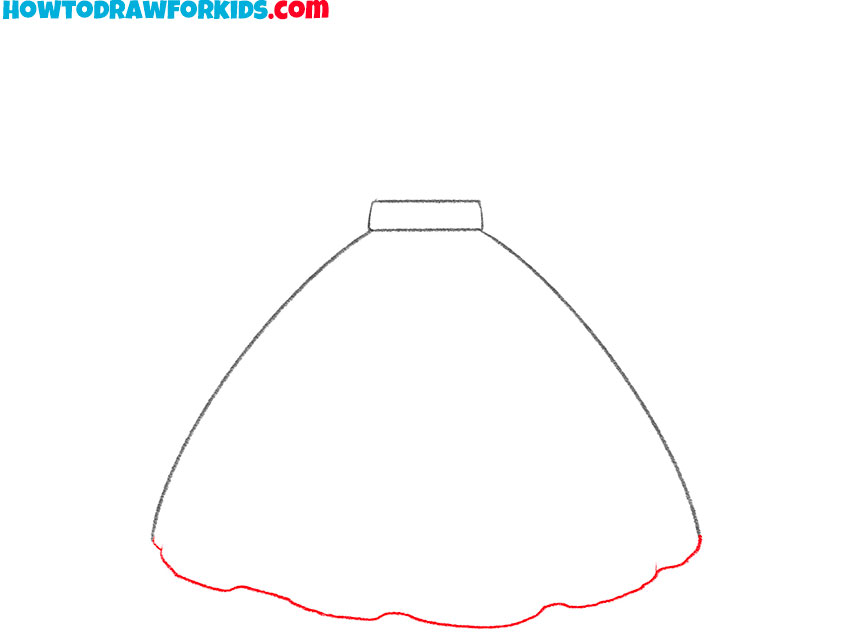
- Add the outline of the top of the dress.
You should depict two symmetrical curved lines in the upper part of the dress.
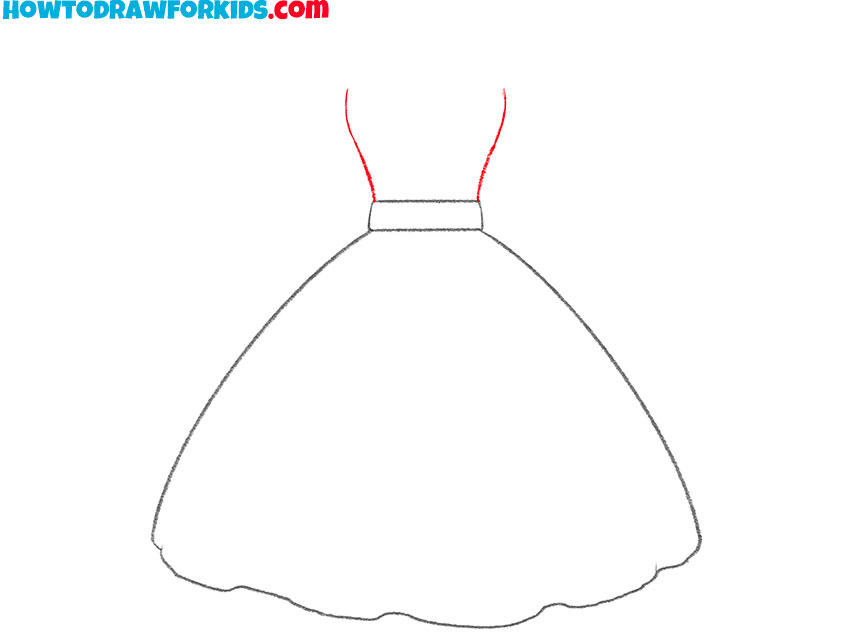
- Depict the outer contour of the dress straps.
Continue the two previously drawn lines with two curved lines of shorter length.
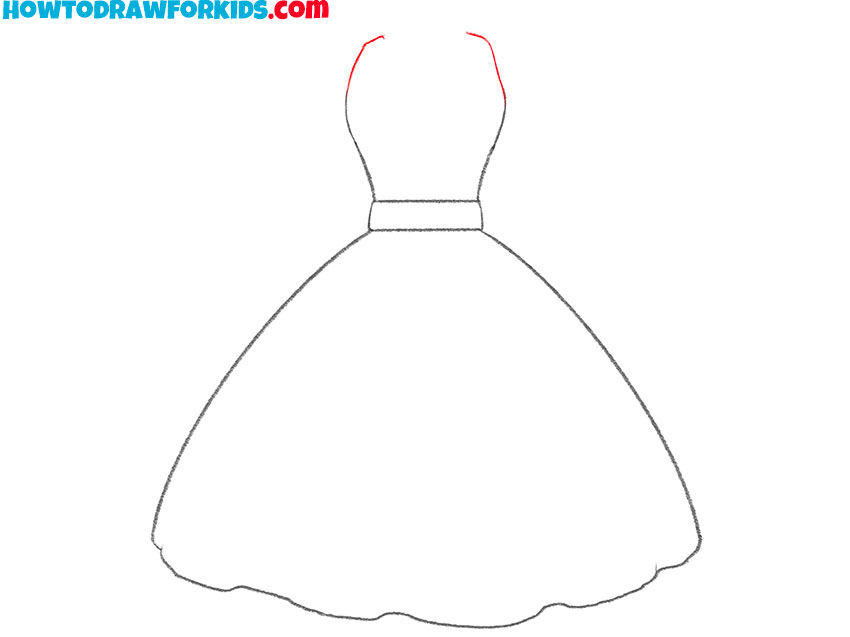
- Draw the outline of the neckline of the dress.
Picture a curved line to connect two previously drawn lines at the top of the dress.

- Add one more neckline to the dress.
Above the previously drawn curved line, draw one arch at the top of the dress.
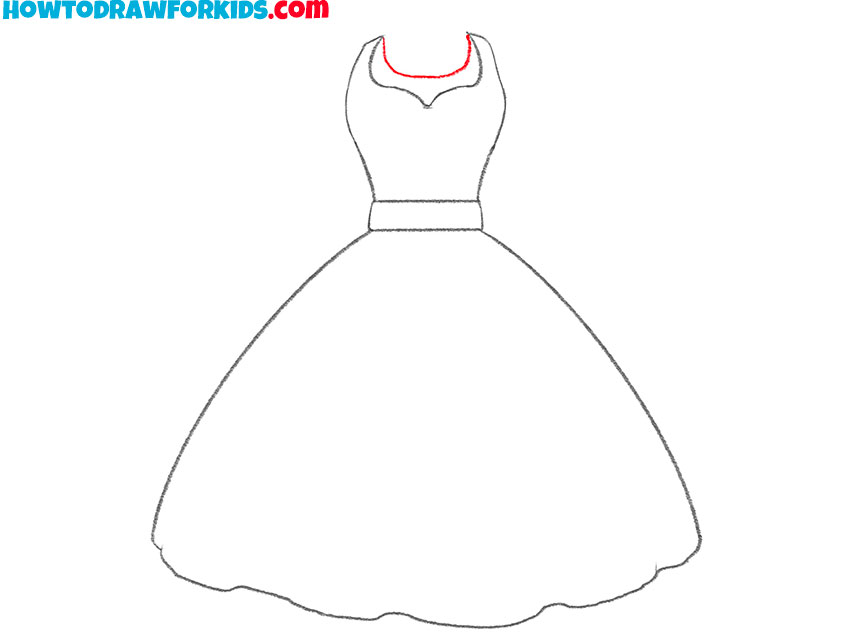
- Depict the decorative elements.
To depict the pleats on the dress, add a few thin long curved lines in its lower part.
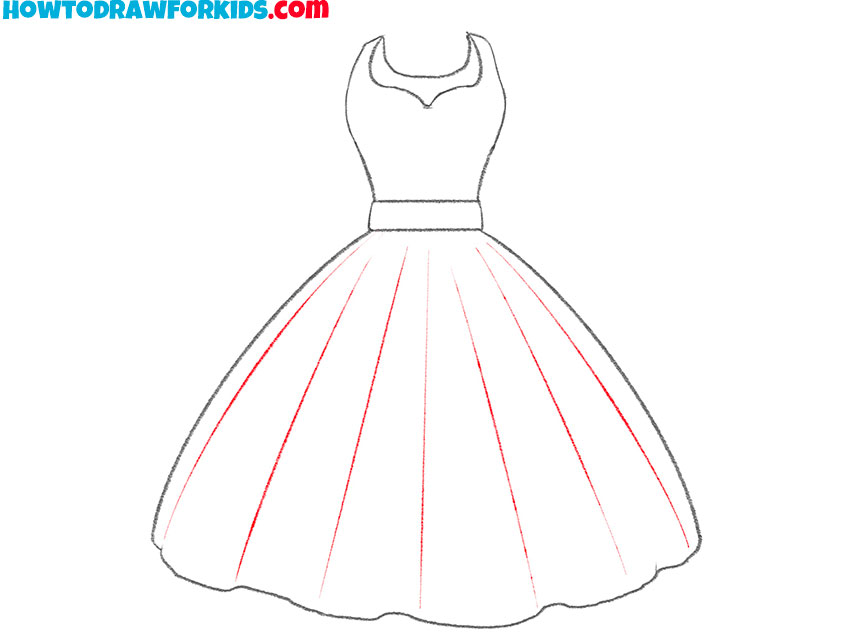
- Color the drawing.
To color the dress you have drawn, you should use shades of blue.
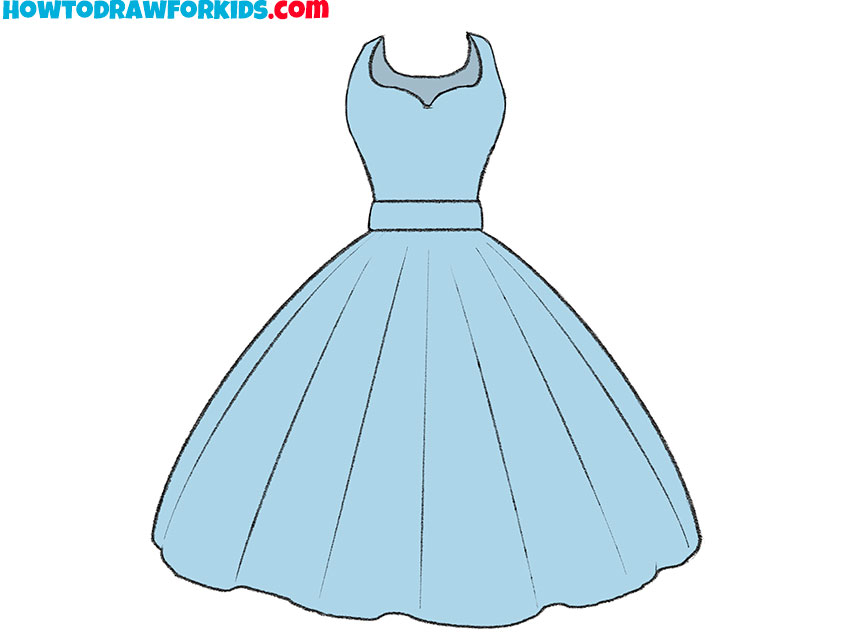
How to Draw a Dress: Video Tutorial
Additional Content
For those who wish to refine their sketches further, I’ve prepared a free PDF file that complements this lesson on drawing a dress. Available for download, it’s a convenient tool that you can turn to anytime, providing you the flexibility to practice without the need for an online connection.
While this PDF does not replicate the step-by-step guidance found in the main lesson, it is filled with additional exercises. These are meant to further your drawing capabilities, allowing you to continue honing your skills even after you’ve grasped the foundational techniques.
Consider this PDF an essential part of your artistic toolkit. It’s there to assist in your continued learning, offering a path to refine your abilities in drawing dresses. With this resource, you’re well-equipped to advance your art, ensuring steady progress in your illustrative journey.
Alternative Drawing Techniques
To enhance your journey in mastering dress illustration, I’ve crafted several alternative techniques. Each is designed to challenge and expand your skills, encouraging experimentation with different dress styles and drawing approaches. These methods aim to push your creative boundaries and foster artistic growth.
By integrating these alternative techniques into your practice, you’ll engage with a broader spectrum of dress designs, from the simplistic to the intricate. This diversity in practice is key to developing a versatile skill set, allowing you to approach any dress drawing with confidence and innovation.
Embracing these varied drawing techniques is crucial for your development as an artist. They offer fresh challenges and learning opportunities, ensuring that your ability to illustrate dresses evolves, becoming more sophisticated and expressive with each sketch.
How to Draw a Dress with a Belt
In this drawing tutorial, we tackle the sweet simplicity of a belted dress, breaking it down into manageable stages. We begin with a gentle curve for the neckline, then outline the bodice before cinching it with a belt, capturing the essence of a dress that combines grace with a hint of structure.
Step by step, we add elements that bring the dress to life, from the rounded bodice to the flowing skirt. The belt is a central feature, tied neatly at the waist, which we illustrate with care to emphasize its shape and the way it defines the dress’s form. This methodical approach makes the drawing process accessible and enjoyable.
By the end of this tutorial, you’ll have a complete and charmingly simple dress, accented with a belt that adds both style and dimension. Whether you’re a novice artist or looking to brush up on your skills, this lesson provides a clear path to drawing a beautiful belted dress.
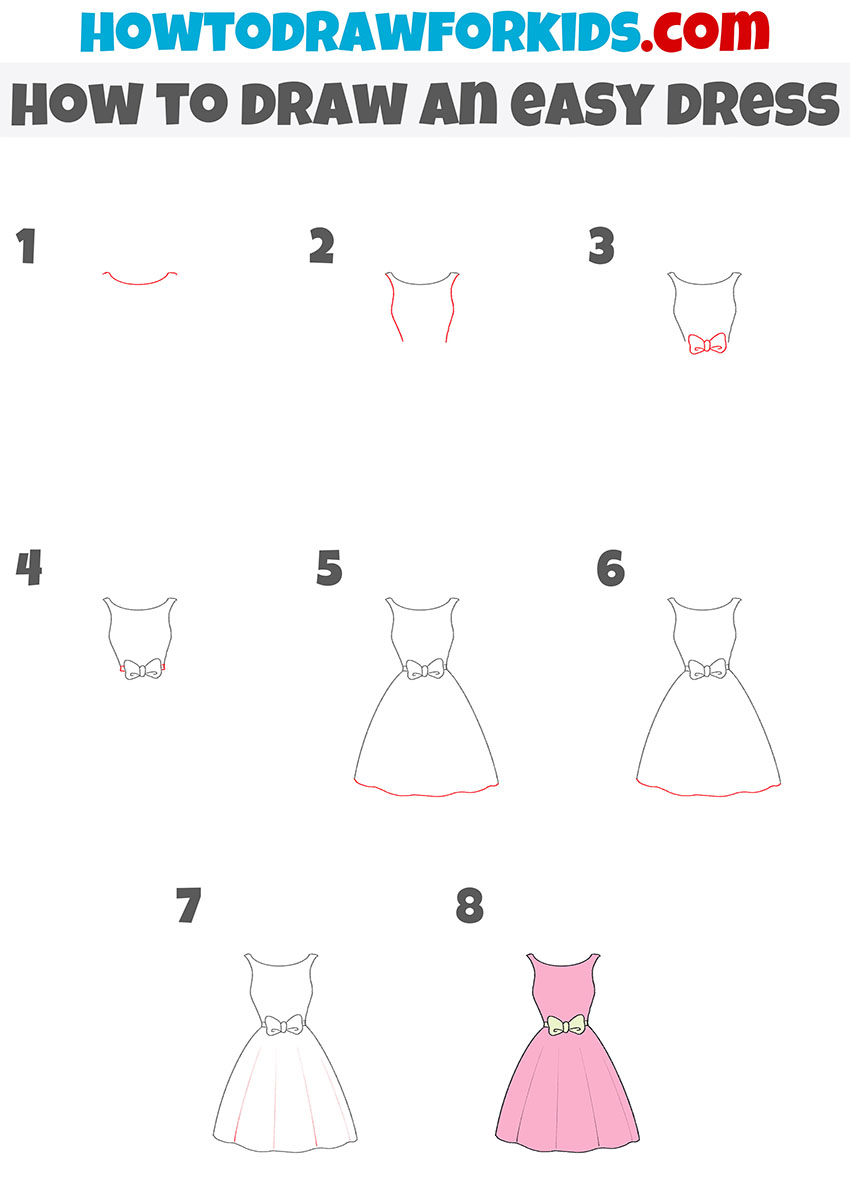
Dress Drawing Guide for Kindergarten
Tapping into the joy of simplicity, I’ve tailored this drawing lesson to the imaginative minds in kindergarten. We’re repeating the previous dress’s style but streamlining every detail. Starting with the most basic shapes, the process is crafted to make success achievable for even the smallest of hands.
In this method, we focus on broad strokes and the primary outline of the dress, avoiding any complex curves or details that might overwhelm. The emphasis is on creating a clear form, like the playful bow and the wide skirt, that can be easily recognized and replicated. It’s about making each child feel like a successful artist.
By simplifying the dress into basic parts, we not only make it easier for young learners to follow along but also help them understand the essence of the shape. This approach encourages confidence and creativity, allowing each child to proudly say, “I can draw a dress.”

Conclusion
With the final stroke of our dress drawing complete, I hope you’ve found this lesson to be both delightful and educational. If you’re eager to keep your pencil moving, my website is brimming with diverse tutorials. Why not venture into the wild with a leopard drawing lesson, or celebrate achievements by learning to sketch a graduation cap?
I invite you to connect with me on social media, where I share updates and previews of upcoming lessons. Your engagement means the world, and I welcome your comments or requests for future tutorials below. Let’s continue to grow our creative community, one drawing at a time.

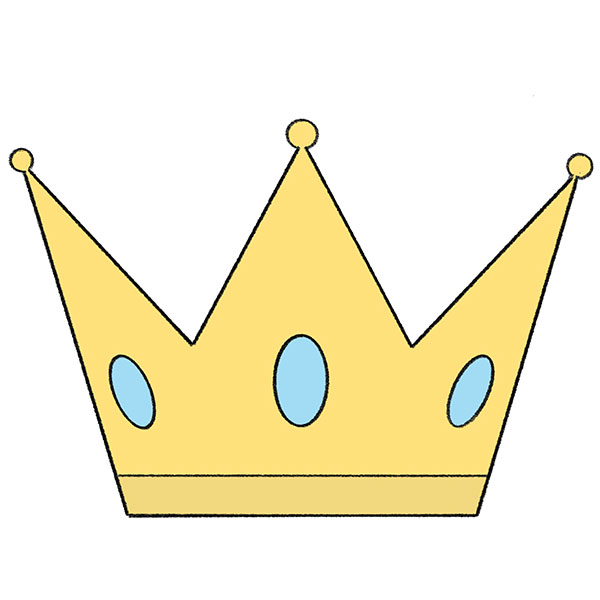
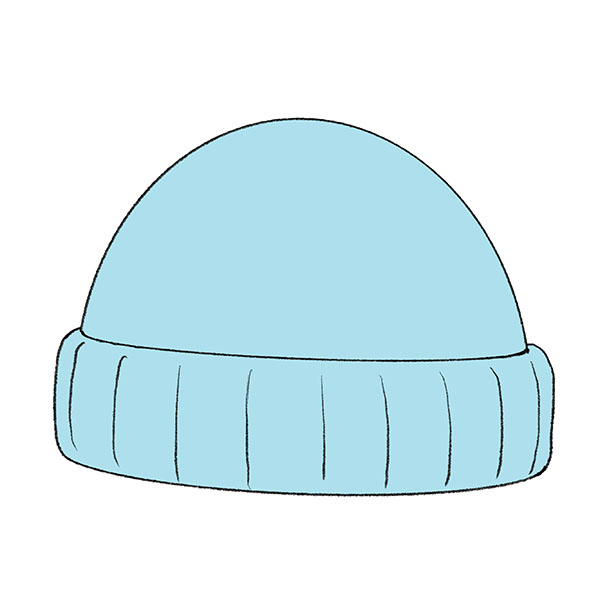
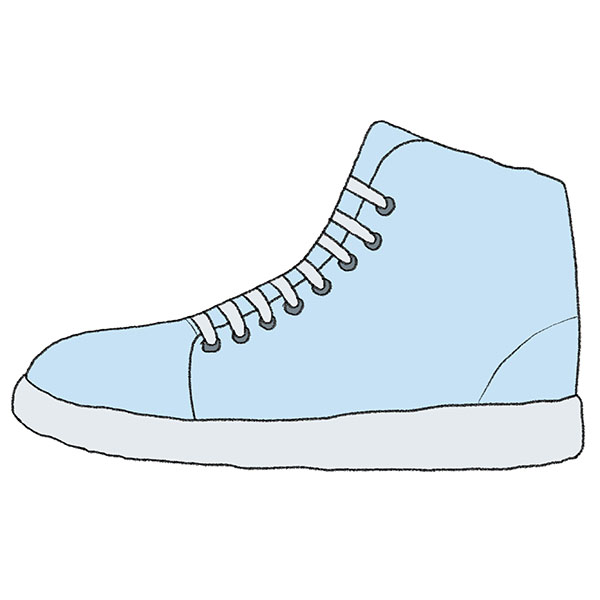
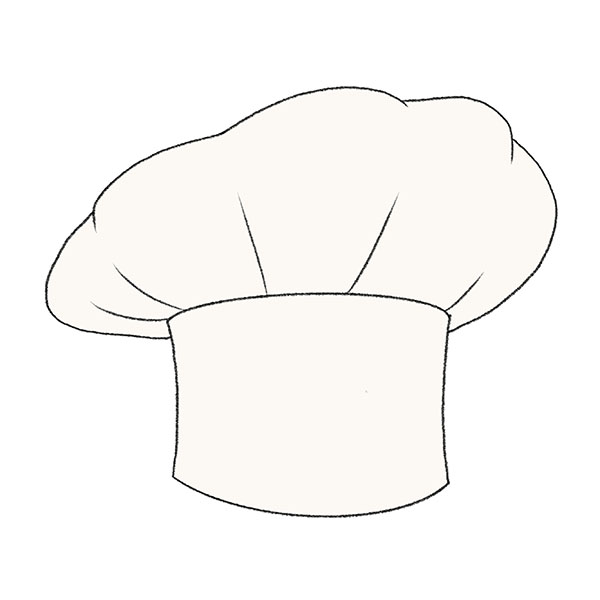

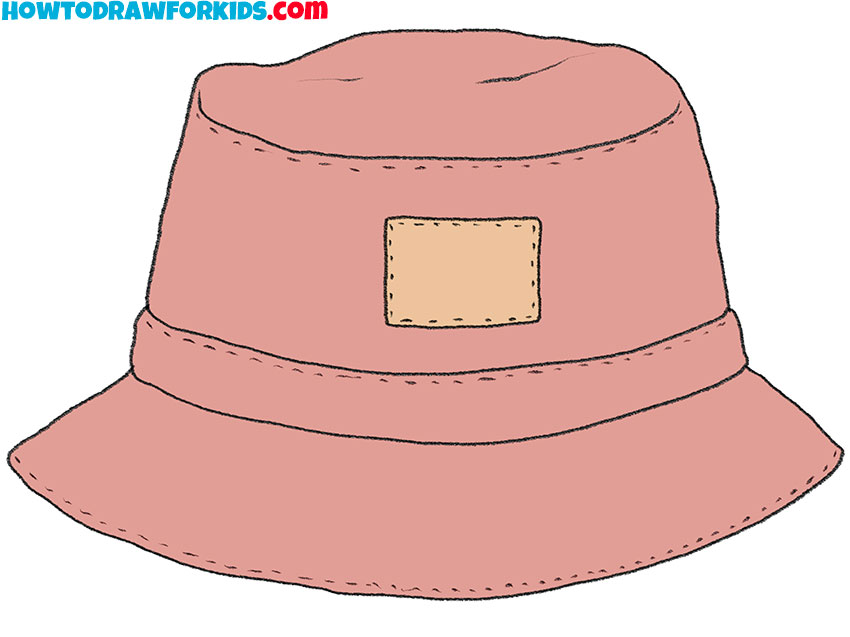
Wow
I absolutely love it, because it is very easy to draw…